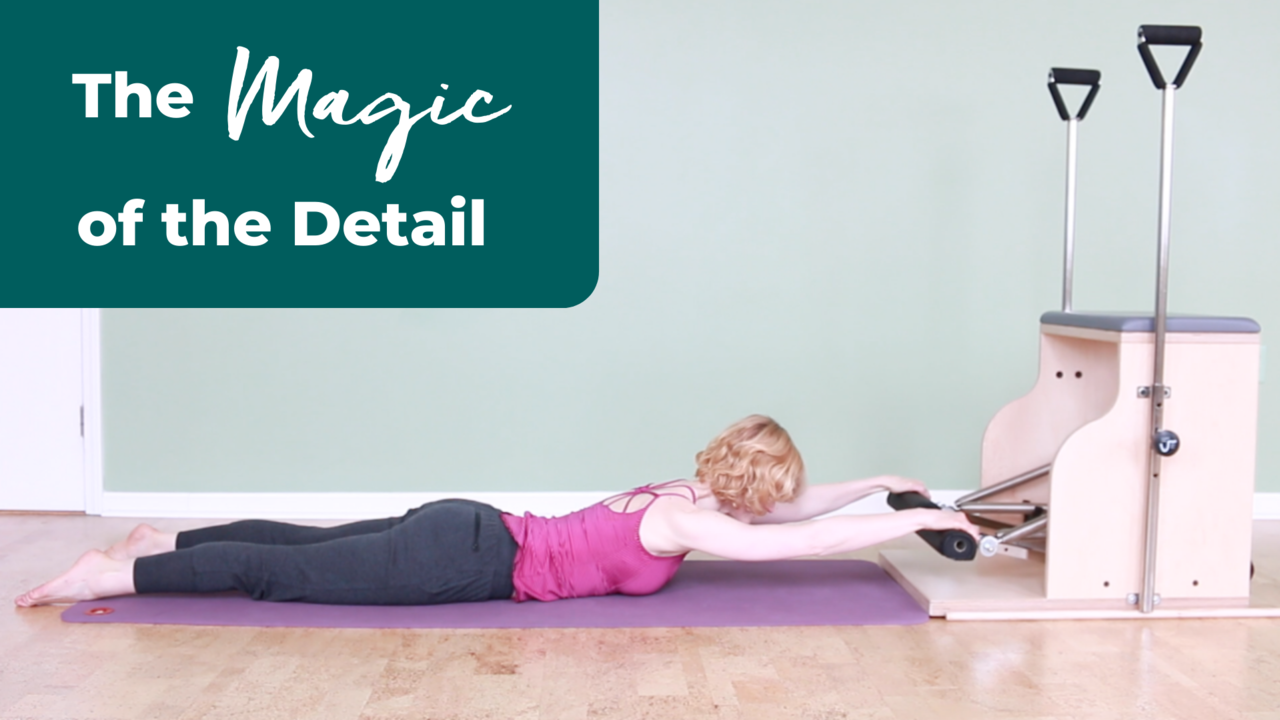
The True Magic of Pilates Lies In The Details | Why Less Is More
Mar 25, 2019In traditional exercise, the goal is to make movements bigger, perform more repetitions with more weight. Always pushing the edge of what we can do, working at our limit.
Pilates is different, oh so different!
Maybe you’ve had the experience before where one of your teachers encouraged you to make a certain movement smaller and gave you a few other cues, and - quelle surprise - the exercise became more challenging (in a good way).
Related: The Cueing Cure: Dramatically Improve Your Verbal Cueing in 30-Days
Big movements are not always what we’re after in a Pilates practice. A mere five millimeters of misalignment of your humeral head - if not corrected and repeatedly loaded with (body) weight (I’m looking at you kettlebell) - can wreak havoc on your shoulder girdle and neck.
In Pilates, we strive to refine or fine-tune our movements. We want to make sure that our joints are congruent and are moving through their optimal range of motion. We are determined to use the right muscles instead of compensatory muscles.
Going forward in your practice and teaching, start to pay attention to the tiny, tiny details. Look more closely. For example, in Seated Push Through (Trapeze Table) or Swan from the Floor (Chair), are you slightly bending your elbows every time you push the bar/pedal down, or are you able to keep them really straight (but not locked)? It completely changes the exercise. Try it.
Have you paid attention to keeping your elbows straight? Small changes make a big difference.
In Bridging or Teaser on the Trapeze Table, are you really articulating your spine one segment at a time? Are you getting to every single one of those vertebrae? Humor me, and just assume that you are cheating (I know you are thinking of everything, and you’ve practiced these exercises a million times, but assume anyway). If you look for it, you will find one vertebra that doesn’t move as well as the others #noonesperfect. Then focus especially on that one vertebra that doesn’t want to move so much. So much harder, right?
This attention to detail is also a great way to squeeze every last drop of benefit out of an exercise. You can practice Pilates forever with this detailed approach and never get bored or outgrow a simple Chest Lift.
In Kneeling Arms Facing Back (Reformer), move your shoulder heads half an inch further back and pull from the muscles on the back of the shoulders. Crazy, how different, right?

Ready to become the confident and effective Pilates instructor that changes people's lives?
Ready to Teach Pilates with Clarity and Confidence?
Join my weekly email newsletter. It's jam-packed with more articles, videos, exercise tutorials and teaching tips.
Only super valuable stuff here. No spam ever. Unsubscribe any time.












